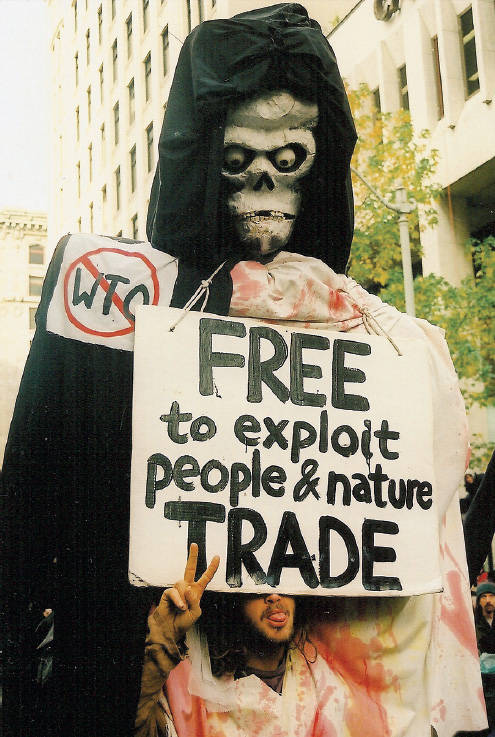Visual Source 23.3
Globalization and Protest
During the last several decades of the twentieth century, the process of economic globalization spawned various movements of resistance and criticism (see Green and Global). In dozens of developing countries, protesters demonstrated or rioted against government policies that removed subsidies, raised prices on essential products, froze salaries, or cut back on social services. Because such policies were often required by the World Bank or the International Monetary Fund as a condition for receiving much-needed loans, protesters often directed their anger at these international financial institutions. In the wealthier countries of the world as well, activists have mounted large-scale protests against what they see as the abuses of unregulated corporate power operating in the world economy. Visual Source 23.3 shows a display of this anger that occurred during the protests in Seattle that coincided with the 1999 gathering of the World Trade Organization.

Question
How does this image reflect the concerns of globalization’s many critics? What political message does it convey?
Question
Why have these criticisms come to focus so heavily on the activities of the World Trade Organization?
Question
To what groups of people might such images be most compelling? How might advocates of corporate globalization respond to these protesters?